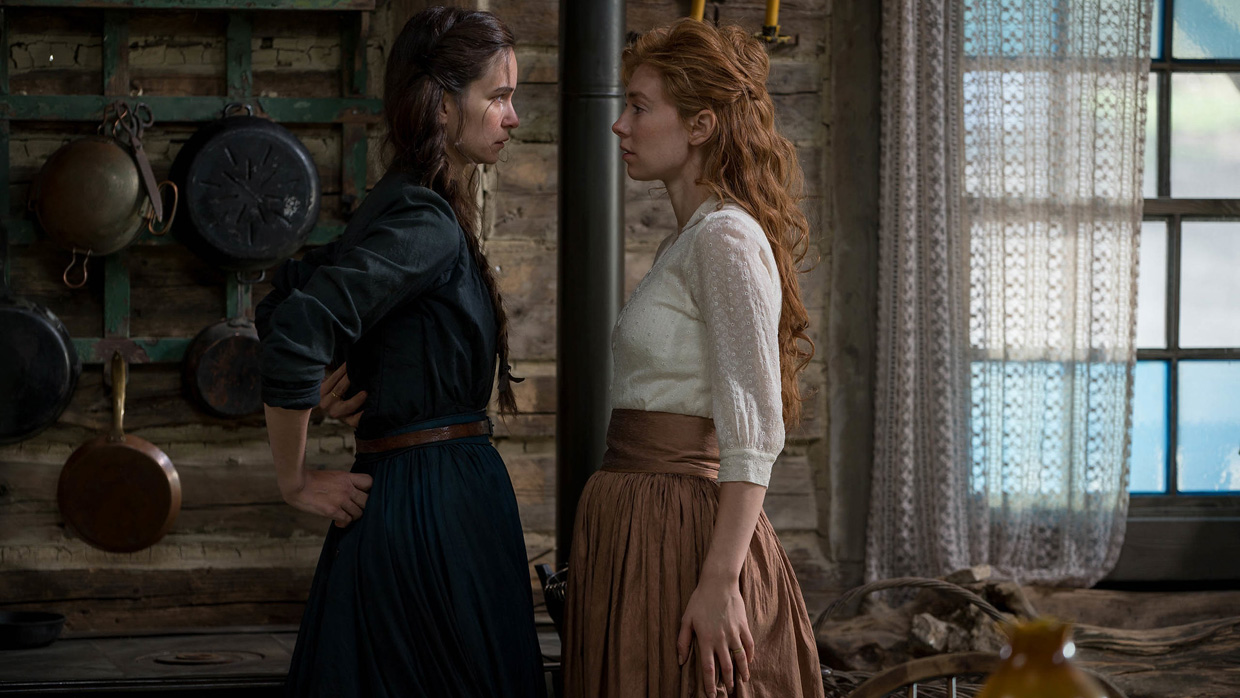 Back to selection
Back to selection
“Softness to Achieve an Ethereal Image”: DP André Chemetoff on The World to Come
 The World to Come
The World to Come Director Mona Fastvold’s second feature film The World to Come is an adaptation of a Jim Shepard short story of the same name. The film follows Abigail (Katherine Waterston), a well-read 19th century wife living in upstate New York who has grown frustrated with the humdrum of provincial life. She soon begins a love affair with her new neighbor Tallie (Vanessa Kirby). Cinematographer André Chemetoff discusses the unique challenge of portraying winter scenes in summer, ballerinas, and achieving ethereality on film.
Filmmaker: How and why did you wind up being the cinematographer of your film? What were the factors and attributes that led to your being hired for this job?
Chemetoff: I guess I met Mona Fastvolt through friends and her husband Brady Corbet whom I worked with on a project in New York. This connection was really made possible through my agent Grant Illes at WME.
Filmmaker: What were your artistic goals on this film, and how did you realize them? How did you want your cinematography to enhance the film’s storytelling and treatment of its characters?
Chemetoff: When I first talked to Mona she was decided on the imagery the film should depict. She shared a great amount of references including stills taken from Russian cinema and paintings from the intimist artist Vilhelm Hammershoi. These illustrated a clear and set direction for the movie’s look. We were then able to refine this vision. We knew we had to shoot on film and somehow translate a certain softness to achieve an ethereal image.
Filmmaker: Were there any specific influences on your cinematography, whether they be other films, or visual art, of photography, or something else?
Chemetoff: For this project I was also inspired by the Australian photographer Bill Henson’s book Particle Mist, picturing young ballerinas.
Filmmaker: What were the biggest challenges posed by production to those goals?
Chemetoff: The biggest challenges were inherent to shooting in remote locations, up the Carpathian Mountains on a very tight schedule. We indeed had to recreate a wintery feeling when shooting all interior sets during the summer, hoping there will be some snow end of fall when coming back to shoot the outdoors scenes. Luckily when we got back in the fall we were welcomed with white powdery landscapes.
Filmmaker: What camera did you shoot on? Why did you choose the camera that you did? What lenses did you use?
Chemetoff: As we wanted to shoot film and because the 35mm was not an option because of budget restriction, we then opted for Super 16 deciding to combine it with sharp lenses, Zeiss Master Primes. Before leaving for Romania, I tested a selection of few lenses through Dior stockings in order to get that misty look.
Filmmaker: Describe your approach to lighting.
Chemetoff: The approach of lighting was quite frontal and filled up, as I wanted to make sure we could transcript the beauty of the colors and the details of the set created by the genius production designer Jean Vincent Puzos.
Filmmaker: What was the most difficult scene to realize and why? And how did you do it?
Chemetoff: I guess the snowstorm was one of the most challenging scene to achieve given it was recreated.
Filmmaker: Finally, describe the finishing of the film. How much of your look was “baked in” versus realized in the DI?
Chemetoff: As we were shooting on film a lot of the look was made on set. The DI was a wonderful part of the job; working with Damien Van Der Cruyssen and Julien Meesters was a joy made possible by Mikros Image’s support. Thanks to them we were able to set up remote sessions between Paris and New York in the mist of the Pandemic.
TECH BOX
Film Title: The World to Come
Camera: Arri 416
Lenses: Zeiss Master Primes
Lighting: Arri
Processing: Cinelab in Romamia
Color Grading: Damien Van Der Cruyssen
